Two wires each carrying a steady current i are shown in two different configurations in column I. The magnetic field produced due to current in the wires is described in column II. Match the situations A and B in column I with all the correct statements in column II.
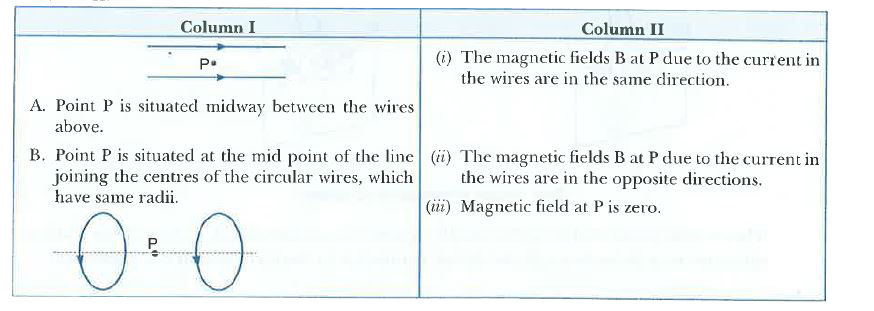
(i) A matches with (ii) and (iii). Applying Fleming.s Left Hand Rule, the magnetic field at P due to the current will be equal and in opposite direction.
(ii) B match with only (i) in column II. Applying Fleming.s Left Hand Rule, the magnetic field at P due to two currents in opposite directions will be in directions.
Topper's Solved these Questions
- MAGNETIC EFFECTS OF ELECTRIC CURRENTBOOK - VK GLOBAL PUBLICATIONCHAPTER - MAGNETIC EFFECTS OF ELECTRIC CURRENTEXERCISE - LONG ANSWER QUESTIONS
18 Videos
- LIGHT-REFLECTION AND REFRACTIONBOOK - VK GLOBAL PUBLICATIONCHAPTER - LIGHT-REFLECTION AND REFRACTIONEXERCISE - PROFICIENCY EXERCISE (Long Answer Questions)
5 Videos
- MANAGEMENT OF NATURAL RESOURCESBOOK - VK GLOBAL PUBLICATIONCHAPTER - MANAGEMENT OF NATURAL RESOURCESEXERCISE - HOTS (Higher Order Thinking Skills)
7 Videos
Similar Questions
Two wire each carrying a steady current I are shown in four configurations in Column I. Some of the resulting effects are described in column II. Match the statements in Column I with the statements in Column II.

View SolutionTwo wires each carrying a steady current I are shown in four configurations in Column I. Some of the resulting effects are described in Column II. Match the statements in Column I with the statements in Column II and the indicate your answer by darkening appropriate bubbles in the 4×4 matrix given in the ORS.

View Solution
Knowledge Check
Match the statements in the column I with those in column II.
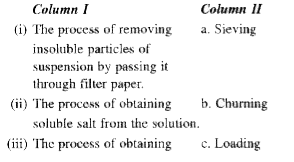
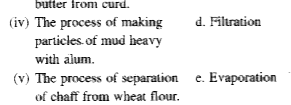 A(i)-e , (ii) - b , (iii)- a , (iv)- c , (v)-dB(i)- d , (ii)- e , (iii) - b , (iv) - c , (v)-aC(i)- e , (ii)-a , (iii)-b , (iv)-c, (v)-dD(i)-b , (ii)-e , (iii)-c , (iv)-a , (v)-d
A(i)-e , (ii) - b , (iii)- a , (iv)- c , (v)-dB(i)- d , (ii)- e , (iii) - b , (iv) - c , (v)-aC(i)- e , (ii)-a , (iii)-b , (iv)-c, (v)-dD(i)-b , (ii)-e , (iii)-c , (iv)-a , (v)-d
Match the statements of column I and column II

View SolutionMatch the statements in Column I with the properties in Column II. A
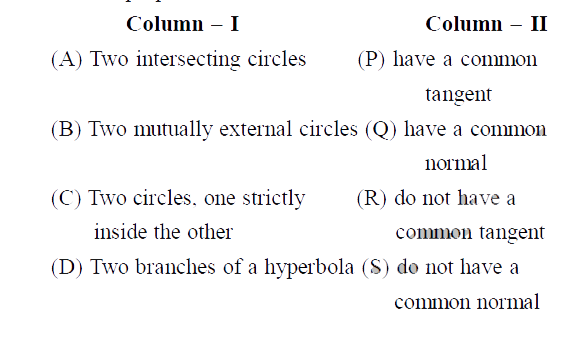
View SolutionMatch species given in column I with the electronic configuration given in column II.
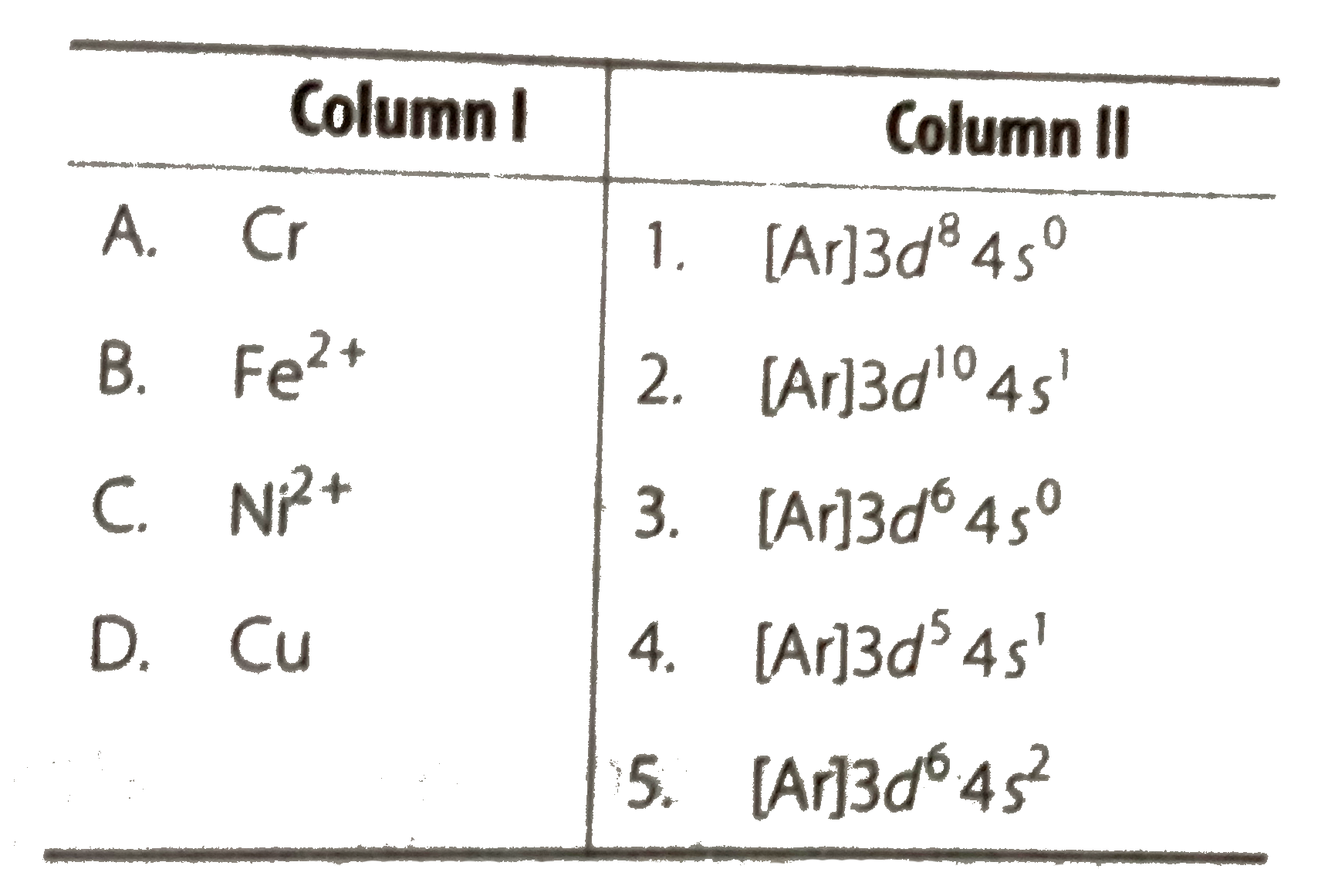
View SolutionMatch species given in column I with the electronic configuration given in column II.

View SolutionMatch the column I with the column II

View SolutionMatch the statements given in Column I and Column II

View SolutionMatch the entries in column I with entries in Column II and then pick out correct options.
Column I Column II
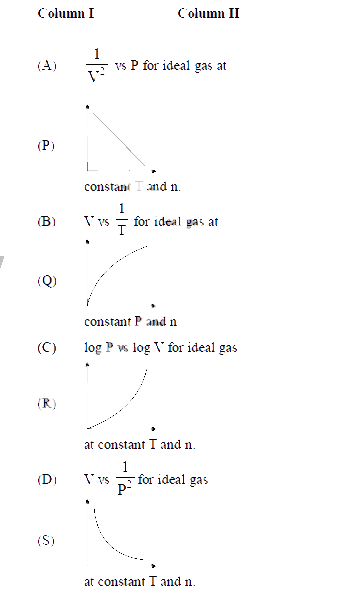
View Solution
